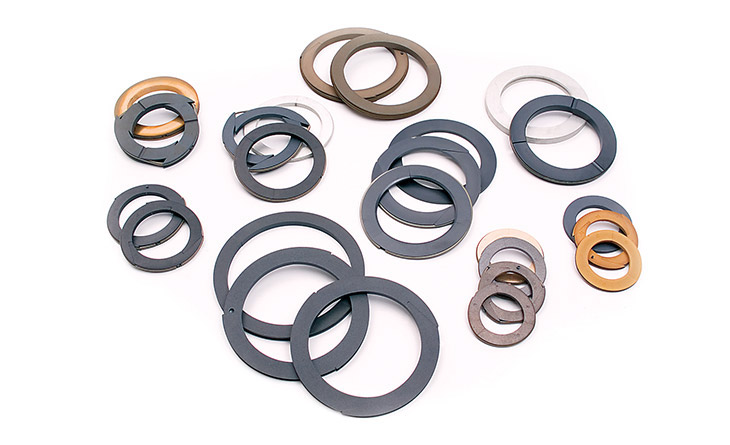Rider Ring: A Critical Component in Compressor Efficiency
In reciprocating compressors, the rider ring maintains long-term reliability and performance. Positioned between the piston and the cylinder wall, this often-overlooked component helps reduce friction, prevent wear, and protect vital machine parts. Whether used in natural gas compression, petrochemical processing, or manufacturing, rider rings are indispensable to efficient, safe compressor operation.
What Is a Rider Ring?
A rider ring is a non-metallic component fitted on a compressor piston to act as a bearing surface between the piston and cylinder wall, preventing metal-to-metal contact and reducing wear. Made from durable, self-lubricating materials like PTFE blends or thermoplastics, rider rings withstand high temperatures, pressure, and corrosive environments with minimal lubrication needs.
Why Are Rider Rings Important?
The rider ring is a sacrificial component, absorbing wear and stress during piston movement to protect costly compressor parts. Maintaining alignment and clearance ensures smooth operation and extends equipment life. Replacing a worn rider ring is far cheaper and easier than replacing pistons or cylinders, making it a vital part of the system.
How Rider Rings Improve Compressor Efficiency
In high-pressure compressors, rider rings reduce friction and heat by creating a buffer between the piston and cylinder, improving efficiency and lowering energy costs. They also ensure proper piston alignment, stabilize movement, and prevent wear and potential failure.
Material Selection and Performance
Rider ring material selection depends on gas type, temperature, pressure, and lubrication. PTFE-based compounds suit oil-free compressors for their low friction and chemical resistance, while tougher conditions may require reinforced thermoplastics or carbon-filled polymers. In corrosive environments, specialized materials are crucial. Working with an experienced supplier ensures the right choice.
Signs of Rider Ring Wear and When to Replace
Although rider rings are designed for durability, they do wear over time. Common signs of rider ring wear include:
● Excessive vibration
● Decline in compressor efficiency
● Abnormal noises during operation
● Increased clearance between the piston and cylinder wall
Periodic inspection should be part of any compressor maintenance routine. If the rider ring is visibly worn, cracked, or has thinned beyond acceptable limits (often 20% or more of the original thickness), it’s time for a replacement. Failing to do so can lead to piston scoring, cylinder damage, or unplanned downtime.
Replacing a Rider Ring
Replacing a rider ring is straightforward but requires precision. It involves disassembling the compressor, cleaning the ring grooves, and installing a properly fitted ring. Using the correct materials and ensuring compatibility with your compressor model is essential. Follow manufacturer guidelines or consult experts to avoid performance issues.
Rider Ring Applications Across Industries
Rider rings are found in various industries where reciprocating compressors are used. This includes:
● Oil & Gas: For processing and transporting natural gas under high pressure.
● Chemical & Petrochemical: Where gas purity and corrosion resistance are critical.
● Food & Beverage: In oil-free compressors, where hygiene is paramount.
● Power Generation: In systems that require continuous, reliable operation.
Each industry has unique challenges, but rider rings provide a universal solution for reducing friction and extending equipment life.
Innovation and the Future of Rider Rings
As technology evolves, rider rings are becoming more advanced. Modern materials are more heat-resistant, wear-resistant, and chemically stable than ever. Manufacturers also experimented with additive manufacturing (3D printing) for rapid prototyping and customization. These innovations are helping companies minimize maintenance, reduce energy usage, and improve overall operational efficiency, making rider rings a smart investment in new and legacy compressor systems.
Choose the Right Rider Ring for Your Compressor
When optimizing compressor performance, the rider ring should never be an afterthought. Choosing the right design and material—and ensuring timely maintenance—can prevent major breakdowns and save thousands in repairs.
If you’re unsure which rider ring is right for your system, consult with trusted suppliers or compressor specialists. They can help guide you through selection, installation, and maintenance best practices for maximum return on investment.





